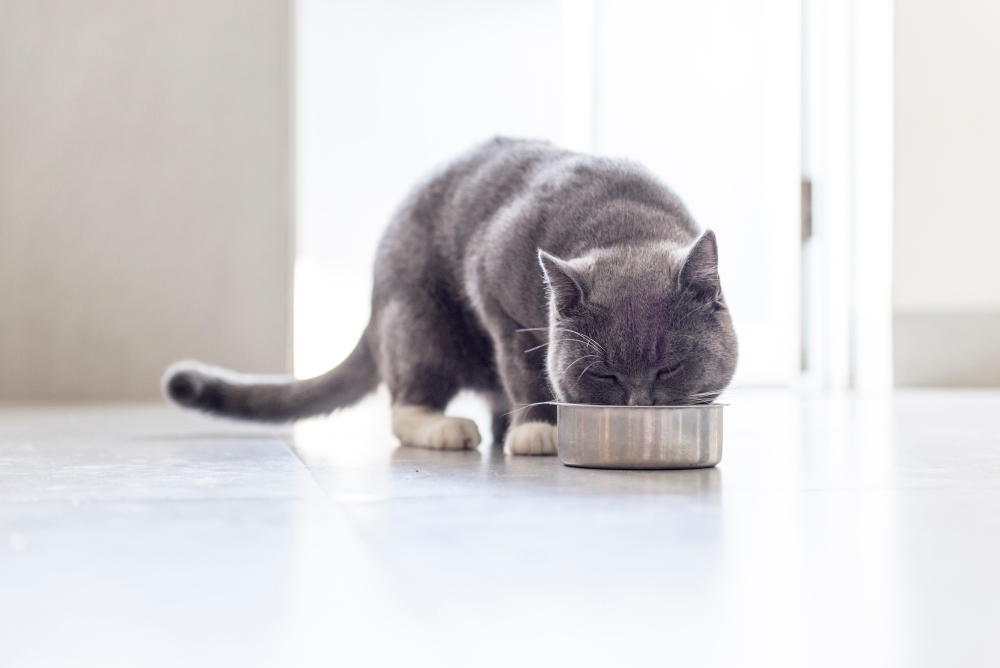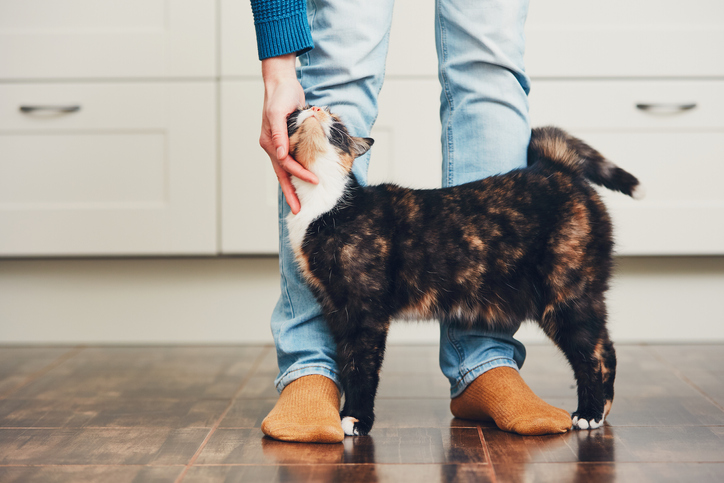Table of Contents
Is your cat eating too much or too little? Whether you’re welcoming a new feline into your life or need to put your current kitty on a diet, you want to be sure your cat is eating the right amount of food. When determining the calorie needs of your cat, age and activity level are just a couple of the factors to consider. You can discuss your cat’s particular needs with your veterinarian, but on average cats should be fed by these basic guidelines:
Cats at a healthy weight
- A 10-pound (lean) cat should consume 280 calories per day
- A 15-pound cat should eat 360 calories
- A 20-pound cat requires 440 calories per day
Kitty on a diet
- An overweight cat weighing 10 pounds should consume 240 calories per day
- A 15-pound overweight cat should eat 280 calories per day
- A 20-pound overweight cat should eat 310 calories per day
To prevent overfeeding or underfeeding, you should know the calorie content of the food you are using. Typically, dry food contains about 300 calories per cup, and canned food contains about 250 calories in each 6 oz can, however this will vary by brand. If the information isn’t on the label, check the manufacturer’s website or you can even call their customer helpline and ask.
Preventing obesity
A 2014 study by the Association for Pet Obesity Prevention (APOP) found that 58 percent of cats were overweight. Obesity can cause health problems such as diabetes and arthritis, and being overweight can prevent your cat from grooming herself properly. By nature, cats are fastidiously clean, so that obstacle can make her downright miserable. Also, trouble maneuvering around the litter box could cause her to have “accidents” outside the box.
Your cat is at her ideal weight if she is well proportioned, has a bit of a waistline behind the ribs, and has only a thin layer of fat over her ribs and abdomen. She’s overweight if she has heavy fat deposits and looks round. A fat cat may look cute, but it’s not healthy.
Free feeding—leaving food out all the time—is the biggest factor contributing to obesity in cats. It’s best to stick to a feeding schedule; feeding your cat in the morning and evening, when kitty would be hunting in the wild, is ideal.
To prevent obesity, be sure to limit treats to 10 percent of your cat’s daily intake and avoid giving your cat scraps from your dinner.
Don’t forget the water
In addition to proper nutrition, water is critical to your cat’s health. The Pet Food Institute says water aids digestion and the absorption of nutrients, helps your cat maintain proper body temperature, and helps with elimination. Cats don’t have a strong drive to drink water, but it’s critical that your cat gets enough water to prevent urinary tract problems and other health issues. Be sure fresh, clean water is always easily accessible, and wash food and water bowls regularly. Some cats prefer running water and may enjoy hopping in the bathtub to get a drink. Place water bowls around the house to see which location Fluffy prefers.
The moisture content of canned cat food is up to 75 percent, which can help keep your cat hydrated. You could also add water to dry food.
While commercial cat foods provide all the essential nutrients your cat needs, new brands and nutritional movements hit the market daily. Be sure to consult your veterinarian to determine what is best for your cat.








